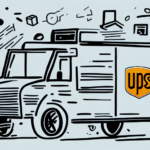The Importance of UPS Insurance for Valuable Shipments
Shipping valuable goods can be a stressful experience, but securing insurance can offer peace of mind. UPS provides insurance for shipments to protect against financial losses that can arise from damage or loss during transit. According to the UPS official website, having insurance ensures that shippers are not solely responsible for unexpected mishaps such as accidents, theft, or natural disasters. This financial protection allows businesses to focus on other critical aspects, such as marketing and customer service, without the constant worry of potential losses.
Moreover, offering insurance can help build trust with customers. Demonstrating a commitment to protecting their interests can enhance your reputation as a reliable and trustworthy business, potentially leading to repeat business and positive word-of-mouth referrals.
Understanding UPS Insurance Coverage
Basic Coverage Provided by UPS
UPS offers insurance that covers the declared value of the shipment, including both the cost of goods and shipping charges. For example, a $5,000 shipment would have an insurance cost that is a percentage of its declared value. The standard coverage typically handles up to $100 of the shipment's value, but additional coverage options are available for higher-value items.
Types of Goods Covered
It's important to note that UPS insurance does not cover all types of goods. High-value items such as jewelry, antiques, and artwork may require additional insurance or may not be covered under standard policies. Always verify with UPS or your shipping provider to ensure full coverage for your specific shipment. Proper documentation and accurate records of the shipped items are essential for filing any potential claims.
Determining the Cost of UPS Insurance
Factors Influencing Insurance Costs
The cost of UPS insurance is influenced by several factors, including the destination country, mode of transport, type of goods, and required delivery speed. For instance, faster delivery options typically incur higher insurance costs. Additionally, shipping longer distances or to countries with higher risk profiles can increase the insurance premium.
Calculation Methods
UPS provides an online shipping calculator tool that helps determine the exact insurance cost. By declaring the shipment's value (e.g., $5,000), selecting the destination, and choosing the mode of transport, shippers can obtain a precise insurance quote. It's advisable to consider the appropriate level of coverage based on the shipment's value to avoid underinsurance or unnecessary costs.
According to Statista, UPS handles millions of packages annually, and understanding the cost structure is crucial for businesses managing high-value shipments.
Comparing UPS Insurance with Third-Party Options
UPS Insurance Advantages
UPS Insurance offers competitive rates and comprehensive coverage, especially for high-value or international shipments. Filing claims directly through UPS can be more straightforward, with their established infrastructure and support systems.
Third-Party Insurance Benefits
Third-party shipping insurance can sometimes be less expensive and offer more flexible coverage options tailored to specific needs. By comparing rates and coverage policies, shippers can choose the option that best fits their requirements.
It is essential to evaluate the ease of the claims process as well. While UPS provides a streamlined process for their insurance, third-party providers might require additional documentation and steps, potentially complicating the reimbursement process.
For a detailed comparison, refer to industry analysis by sources like Forbes.
Tips for Saving Money on UPS Insurance
Optimize Delivery Options
Choosing a standard delivery window rather than expedited options can significantly reduce insurance premiums. Slower delivery times generally carry lower insurance costs.
Secure Packaging
Properly packaging your shipment can minimize the risk of damage, potentially lowering insurance costs and reducing the likelihood of having to file claims. Using robust packaging materials and securing contents effectively are vital steps.
Consider Self-Insurance
For businesses that frequently ship high-value items, self-insuring a portion of the declared value might be a cost-effective strategy. This approach involves assuming some of the risk independently, which can lower overall insurance expenses. However, it's crucial to carefully assess the potential risks and benefits before opting for self-insurance.
Navigating the Claims Process
Filing a Claim
If your shipment is lost or damaged during transit, you must file a claim with UPS within nine months of the delivery date. The claim process requires providing supporting documents such as invoices, proof of insurance, and evidence of damage or loss.
Required Documentation
UPS may request additional information or conduct inspections of the damaged or lost items to process the claim effectively. Maintaining detailed records and accurate documentation of your shipments and insurance policies can facilitate a smoother claims process.
Declared Value Service
UPS offers a "Declared Value" service, allowing shippers to declare a higher value for their shipment beyond the standard liability coverage. This service may involve an additional fee but provides enhanced protection for high-value items.
For more information on the claims process, refer to the UPS Claims Center.
Common Mistakes to Avoid When Purchasing UPS Insurance
When purchasing UPS insurance, accurately declaring the shipment's value is crucial. Misstating the value can lead to insufficient coverage or complications during the claims process. Additionally, always take clear pictures of the shipment before dispatch and ensure it is securely packed with appropriate materials to prevent damage.
Another common mistake is not thoroughly reading the terms and conditions of the insurance policy. Understanding what is covered and what is excluded can prevent unexpected surprises in the event of a claim. For example, certain policies may exclude damages caused by natural disasters or acts of terrorism.
Finally, keep track of your shipment's progress using UPS's tracking system. Monitoring can help identify any issues or delays early, allowing you to take necessary actions promptly.
Conclusion
UPS insurance is a valuable investment for businesses shipping high-value goods. The cost of insurance for a $5,000 shipment varies based on factors such as destination, mode of transport, and delivery speed. By understanding the coverage options, comparing with third-party providers, and implementing cost-saving strategies, businesses can effectively manage shipping risks and protect their financial interests. Proper documentation and awareness of the claims process further ensure that potential losses are mitigated efficiently.








